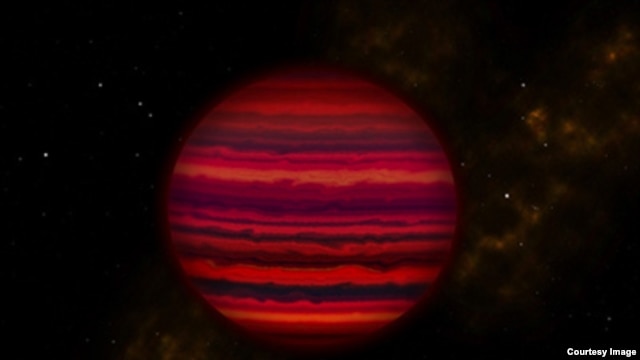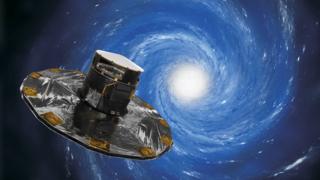LastProphet
Senior Member
- Apr 26, 2014
- 746
- 23
- 53
Prehistoric Cave Contains ... FIRST REAL telescope and discovery headlines in decades
Telescopes in Day 1 and at the End of the Age: Dark side of the moon "by far" not the only "coincidence"
Last Prophet is AGAIN revealing the TRUE STORY about the DARK SIDE OF THE MOON where two of the keywords are "Day 1" and PARADOXICALLY "TELESCOPE".
This was triggered by Last Prophet's worldwide only disciple starting a thread posing that question on Jun 22, 2016.
""Coincidentally" ten days later: illuminati media has the first headlines in decades about a REAL telescope.
And that is literally "by far" not the only coincidence.
Prehistoric Cave Contains a Hidden, 6,000-Year-Old Telescope
Transcript:
"Much of our culture has been shaped by what ancient humans thought about while looking at the night sky. Myths and legends, gods and demons, all are influenced by our ancestors' observations of the movements of the planets and stars. And now, researchers have uncovered one of the earliest tools that they used to make those observations: a telescope from six thousand years ago.
While a modern telescope works by magnifying images with mirrors or lenses, this ancient structure is a long, narrow corridor designed to filter out unwanted light. The corridor helps when viewing stars during the hours of dawn and twilight, when the light from the sun makes it hard to view stars near the horizon.
The structure is part of a what's called a "passage grave," a prehistoric tomb with a long entrance corridor. Passage graves are found throughout Europe, and scientists are just starting to examine the astronomical uses of their entrances. The researchers are focusing on a particular passage grave, the Seven-Stone Antas in central Portugal, which is about 6,000 years old.
The researchers believe that the Seven-Stone Antas corridor was used to view the star Aldebaran, the red giant in the constellation Taurus. Aldebaran first becomes visible in the Northern Hemisphere in the early morning of late April, just before sunrise, and viewing it through the passage could make it visible days earlier. Aldebaran likely was a seasonal marker, and its appearance would signal migration patterns or weather changes.
The researchers are now studying other passage graves, in the hope of learning more about prehistoric people."
Notes
Prehistoric Cave Contains a Hidden, 6,000-Year-Old Telescope
BASICS
ASTRONOMY FOR DUMMIES - The ONE BASIC FACT - read and weep about yourself
Any celestial body that can not be observed with a telescope located ON Earth, is fake.
This one basic fact implies that for instance Pluto (the first example among millions) is an invention created by the illuminati.
Decades later the illuminati used NASA and the soviet space agency to serially produce Pluto type of hoaxes.
Sun, Moon and Planets as God showed us ever since Day 1: ASTRONOMY FOR DUMMIES - The ONE BASIC FACT - read and weep about yourself
Reveale by Last Prophet first a decade ago and censored shprtly after, it's being revealed agaain.
End Times Prophet, what's the *** TRUE STORY *** about the DARK SIDE OF THE MOON?
First reply by Last Prophet in page 2:
End Times Prophet, what's the *** TRUE STORY *** about the DARK SIDE OF THE MOON?
Talk of Caves and what illuminati serve as "first humans": Anthropology's CAVEMEN hoax becomes reality in Syria: End Times Paradoxes
End Times Paradoxes: Anthropology CAVEMEN hoax becomes reality in Syria: with ww3 air bombings
Talk of caves at the end of the show: the same actor plays POTUS Obama and Tora Bora caveman Osama ressurrecting in Jerusalem crucified to a missing flying machine.
The Web of Disinformation set up by the Illuminati: Flying Machine Disappear Afghan Cave joke
All in Blog
Sun, Moon and Planets as God showed us ever since Day 1: Prehistoric Cave Contains ... FIRST REAL telescope and discovery headlines in decades
Telescopes in Day 1 and at the End of the Age: Dark side of the moon "by far" not the only "coincidence"
Last Prophet is AGAIN revealing the TRUE STORY about the DARK SIDE OF THE MOON where two of the keywords are "Day 1" and PARADOXICALLY "TELESCOPE".
This was triggered by Last Prophet's worldwide only disciple starting a thread posing that question on Jun 22, 2016.
""Coincidentally" ten days later: illuminati media has the first headlines in decades about a REAL telescope.
And that is literally "by far" not the only coincidence.
Prehistoric Cave Contains a Hidden, 6,000-Year-Old Telescope
Transcript:
"Much of our culture has been shaped by what ancient humans thought about while looking at the night sky. Myths and legends, gods and demons, all are influenced by our ancestors' observations of the movements of the planets and stars. And now, researchers have uncovered one of the earliest tools that they used to make those observations: a telescope from six thousand years ago.
While a modern telescope works by magnifying images with mirrors or lenses, this ancient structure is a long, narrow corridor designed to filter out unwanted light. The corridor helps when viewing stars during the hours of dawn and twilight, when the light from the sun makes it hard to view stars near the horizon.
The structure is part of a what's called a "passage grave," a prehistoric tomb with a long entrance corridor. Passage graves are found throughout Europe, and scientists are just starting to examine the astronomical uses of their entrances. The researchers are focusing on a particular passage grave, the Seven-Stone Antas in central Portugal, which is about 6,000 years old.
The researchers believe that the Seven-Stone Antas corridor was used to view the star Aldebaran, the red giant in the constellation Taurus. Aldebaran first becomes visible in the Northern Hemisphere in the early morning of late April, just before sunrise, and viewing it through the passage could make it visible days earlier. Aldebaran likely was a seasonal marker, and its appearance would signal migration patterns or weather changes.
The researchers are now studying other passage graves, in the hope of learning more about prehistoric people."
Notes
Prehistoric Cave Contains a Hidden, 6,000-Year-Old Telescope
BASICS
ASTRONOMY FOR DUMMIES - The ONE BASIC FACT - read and weep about yourself
Any celestial body that can not be observed with a telescope located ON Earth, is fake.
This one basic fact implies that for instance Pluto (the first example among millions) is an invention created by the illuminati.
Decades later the illuminati used NASA and the soviet space agency to serially produce Pluto type of hoaxes.
Sun, Moon and Planets as God showed us ever since Day 1: ASTRONOMY FOR DUMMIES - The ONE BASIC FACT - read and weep about yourself
Reveale by Last Prophet first a decade ago and censored shprtly after, it's being revealed agaain.
End Times Prophet, what's the *** TRUE STORY *** about the DARK SIDE OF THE MOON?
First reply by Last Prophet in page 2:
End Times Prophet, what's the *** TRUE STORY *** about the DARK SIDE OF THE MOON?
Talk of Caves and what illuminati serve as "first humans": Anthropology's CAVEMEN hoax becomes reality in Syria: End Times Paradoxes
End Times Paradoxes: Anthropology CAVEMEN hoax becomes reality in Syria: with ww3 air bombings
Talk of caves at the end of the show: the same actor plays POTUS Obama and Tora Bora caveman Osama ressurrecting in Jerusalem crucified to a missing flying machine.
The Web of Disinformation set up by the Illuminati: Flying Machine Disappear Afghan Cave joke
All in Blog
Sun, Moon and Planets as God showed us ever since Day 1: Prehistoric Cave Contains ... FIRST REAL telescope and discovery headlines in decades
Last edited:









